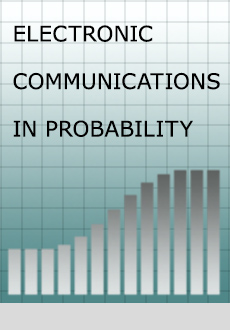Abstract
We examine the percolation model on $\mathbb{Z}^d$ by an approach involving lattice animals and their surface-area-to-volume ratio. For $\beta \in [0,2(d-1))$, let $f(\beta)$ be the asymptotic exponential rate in the number of edges of the number of lattice animals containing the origin which have surface-area-to-volume ratio $\beta$. The function $f$ is bounded above by a function which may be written in an explicit form. For low values of $\beta$ ($\beta \leq 1/p_c - 1$), equality holds, as originally demonstrated by F. Delyon. For higher values ($\beta > 1/p_c - 1$), the inequality is strict.
We introduce two critical exponents, one of which describes how quickly $f$ falls away from the explicit form as $\beta$ rises from $1/p_c - 1$, and the second of which describes how large clusters appear in the marginally subcritical regime of the percolation model. We demonstrate that the pair of exponents must satisfy certain inequalities. Other such inequalities yield sufficient conditions for the absence of an infinite cluster at the critical value (c.f. [4]). The first exponent is related to one of a more conventional nature in the scaling theory of percolation, that of correlation size. In deriving this relation, we find that there are two possible behaviours, depending on the value of the first exponent, for the typical surface-area-to-volume ratio of an unusually large cluster in the marginally subcritical regime.
Citation
Alan Hammond. "Critical Exponents in Percolation via Lattice Animals." Electron. Commun. Probab. 10 45 - 59, 2005. https://doi.org/10.1214/ECP.v10-1131
Information





